Safe Passage for Wildlife
By Angie Langevin
If I asked you right now to leave your house, pick up a few fizzy waters at the store, grab our favorite take-out, and meet me at the park for a picnic… how would you get there? My guess is that you would answer: “I’d hop in the car or ride my bike if it is nice weather.” You wouldn’t have a hard time getting to your destinations thanks to the paved roads and sidewalks (let’s call them “people corridors”) that facilitate the spinning of our tires. What if I asked you to meet me somewhere more remote, say half-way up the Ritchie Hollow Trail, for a picnic? It might be a little more difficult, but you’d still have “people corridors” in the form of a road, parking lot, and trail aiding your travel. Now, what if I asked you to meet me out in the woods, smack-dab in the middle of on one of TRGT’s most remote pieces of property. Even assuming you have a high degree of confidence in your bushwhacking abilities and/or the condition of your hiking boots, you’d have a much harder time finding me and schlepping our picnic basket up the side of the Cumberland escarpment. Why? Simply put- there are barriers in your way and no “people corridors” aiding your commute.
Photo by Kevin Livingood
All silly scenarios aside, we humans have built a massive network of pavement and steel to help us get from point A to point B. However, we are not the only organism on this earth that moves around. Many other species need appropriate corridors in order to migrate, get food, seek shelter, or find a mate. Think about our picnic scenario again – imagine you are not a human but a white-tailed deer (Odocoileus virginianus). You need to get from Stringer’s Ridge over to North Suck Creek where there are some really good white oak acorns and a watering hole (your favorite take-out and fizzy water). How would you get there? What path or corridor would you take?
In the frenzy of our human lives, we sometimes forget that when we build fences, interstates, walls, roads, houses, and parking lots, we are actually creating barriers for other species’ movement. We are literally breaking up what we ecologists call “wildlife corridors”. Remember the black bear (Ursus americanus) that wandered into downtown Chattanooga this summer? That bear was tragically experiencing the lack of a wildlife corridor – it had many human-created obstacles hindering it from simply getting to where it needed to go. Unfortunately, this is not an isolated incident. We could spend all day discussing examples of broken wildlife corridors all over the world and their catastrophic impact on biodiversity.
I know what you are going to ask next: “What can we do to fix this problem? How can we help black bears, white-tailed deer, Virginia opossums, barred owls, American goldfinches, monarch butterflies, and [fill in your favorite species name here] get to their picnics?” One of the best things we can do collectively is to physically preserve wildlife corridors by conserving forest land. At TRGT, the cornerstone of our mission is to protect the land, water, and air of the Tennessee River Gorge. Our strategy is to protect pieces of land that connect to each other, to larger swaths of public land, or to privately conserved land whenever possible. Currently, many of our properties adjoin Prentice Cooper State Forest, TVA’s Raccoon Mountain, or the Cumberland Trail State Park. In 2019 and 2020, we purchased parcels that fully connected all of our existing properties on the slopes of Aetna Mountain. This is exciting news for wildlife!
Photo by Kevin Livingood
Protecting wildlife corridors for species in the air, land, and water is literally part of what we do here every day at TRGT. By supporting us, you are helping protect wildlife corridors for your favorite animal in a big way. I’m supposed to remind you now to visit our website today and donate to TRGT or become a recurring donor! However, that is not the end of this story. Small steps to protect wildlife corridors in your own back yard are also very important to wildlife corridors. Check out these links below to take steps to create wildlife pathways at your home or business and to advocate for wildlife habitat in your local community whenever possible. If all of us do our part, we can make a big difference in wildlife habitat connectivity.
How Can you Help?
Donate to local land conservation organizations such as TRGT.
Learn more about the big picture of wildlife corridors and national projects to help improve wildlife pathways.
What is being done in our region? Learn about a local initiative that TRGT has joined.
Planting season is right around the corner! You can create bird-friendly spaces in your backyard to provide waystations for resident and migrant birds, AND transform your garden into a pollinator pathway.
Architect? Builder? Business Owner? Check out this guide to bird-friendly building practices to help preserve avian corridors.
Are you a leader in your community or neighborhood? The Audubon Society has a great resource or creating bird friendly communities.




